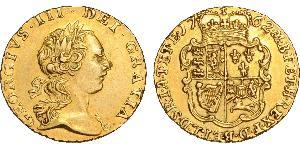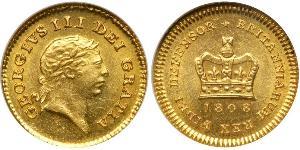Minting techniques during the reign of George III
During the reign of George III, which lasted from 1760 to 1820, various minting techniques were employed to produce coins for circulation across the British Empire. Here are some of the main minting techniques used during this period:
Hammered Coinage: At the beginning of George III's reign, the traditional method of hammered coinage was still in use. This involved placing a blank piece of metal (a planchet) between two dies and striking it with a hammer to impress the design onto the coin. Hammered coinage was labor-intensive and resulted in irregularly shaped coins.
Steam-Powered Coin Presses: The introduction of steam-powered coin presses revolutionized coin production during George III's reign. Steam-powered presses allowed for greater efficiency and consistency in coin production compared to hammered coinage. These presses used steam power to exert force on the dies, striking the planchet between them to produce coins with uniform size and shape.
Copper Coinage: George III's reign saw significant changes in copper coinage, particularly with the introduction of the Soho Mint in Birmingham. The Soho Mint, established by Matthew Boulton, pioneered new minting techniques such as the adoption of steam-powered coin presses and the striking of coins with the collar. Collar striking involved placing a collar around the edge of the planchet before striking, resulting in coins with raised rims and improved quality.
Cartwheel Coinage: In 1797, George III's government authorized the production of large copper coins known as "cartwheel" pennies and two pence coins. These coins were notable for their large size, thick planchets, and high relief designs. They were produced using steam-powered presses and were intended to combat a shortage of small denomination coins in circulation.
Gold and Silver Coinage: Gold and silver coins during George III's reign were produced using similar minting techniques as previous periods, including the use of steam-powered presses for greater efficiency. Coins were struck with precision to ensure uniformity and quality, although variations in design and composition were introduced over time.
Overall, the reign of George III witnessed significant advancements in minting technology, particularly with the adoption of steam-powered coin presses and the establishment of innovative minting facilities such as the Soho Mint. These developments improved the efficiency, quality, and consistency of coin production, contributing to the evolution of British coinage during this period.
You may be interested in following coins
2025-06-25
- Live Coin Catalog's improvements / coins uploading
11 coins were uploaded from 2025-06-18 to 2025-06-25
One of them is:
2025-05-24
- New coin is added to 2 Stuiver Netherlands Silver
2 Stuiver Netherlands Silver
group has 33 coins / 33 prices
⇑
Netherlands / West-Friesland - 2 Stuivers 1766








